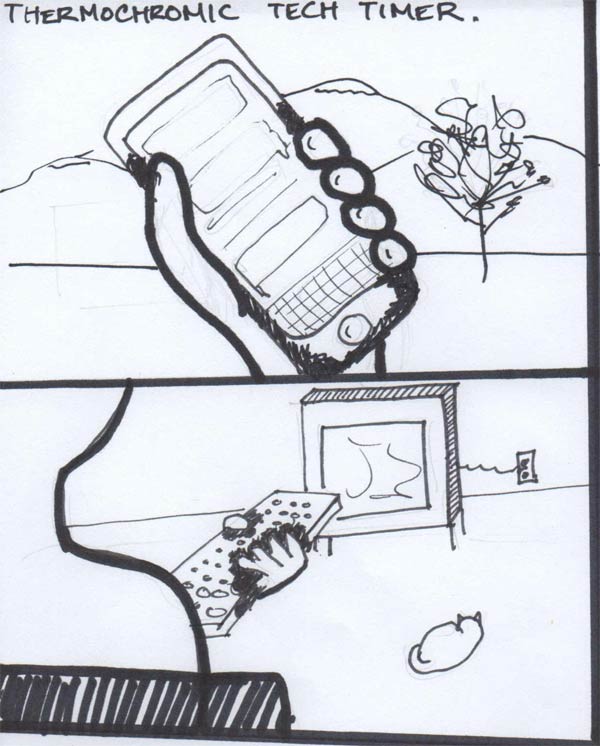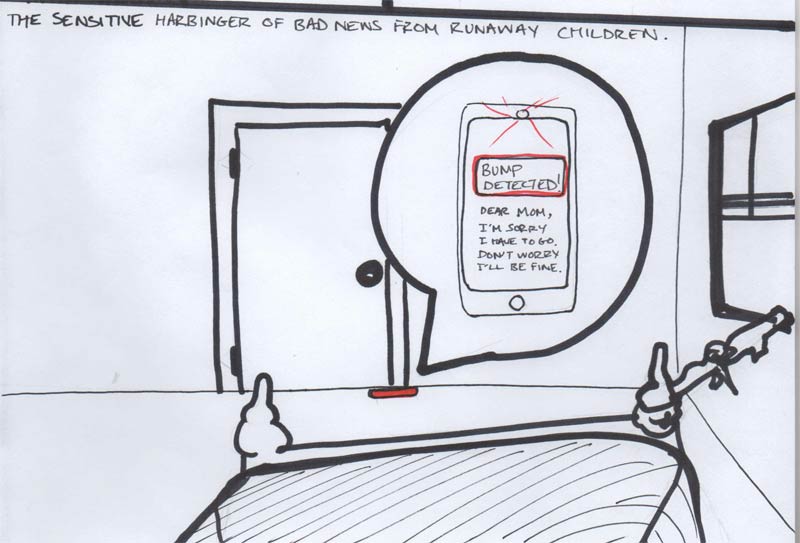Crafting materio-digital combinations through use
September 12th, 2012 By some bearsThis approach to technology as material positions humans as crafters who design technological objects through use. These objects are manufactured as “workmanships of certainty” in an industrialized process that encapsulates and obscures operating logic behind set input methods.
In order to empower users without the knowledge or means to change the inner workings of the device, we might instead reimagine these technical objects as unfinished, subject to misuse by their owners.
Humans outpace machines in their abilities to personalize, improvise, anthropomorphize objects, and interpret new meaning from unexpected behavior. If we imagine gadgets as sites where users exercise such activities, we can imagine human crafters might redesign existing technologies with personal needs in mind. Humans have some knowledge of physical construction. Using this knowledge, they can redesign the object to output signs and signals that were not there before. These signals encourage further dialog with others or with the single user alone at “runtime.”
Three possible alterations leading to redesigned gadgets with new outputs and opportunities for reflection are presented here. The first two do not require the user to interact with the digital logic of the machine. The last example is possible only if the devices’ functionality is modular and interlocking to allow new combinations of sensor input and digital output.
- Coat the device in thermochromic paint. When the device, such as a remote control or a cellular phone, has been held for a long period of time, the gadget will change colors. This visibly changed state of the device sends a signal to the user that a significant amount of time has been passed with the device in use. The user can determine for him or herself how to act based on his or her needs and the context of use.
 Encase the object in a material that translates the gadget’s buttons into personally meaningful labels. For example, a remote control might be redesigned as a tool with limited use by obscuring buttons leading to undesirable outcomes, or by explicitly labeling buttons to reify the implications of their use. When increasing the volume of a button labeled “annoy neighbors,” the user is reminded (in that moment) that he or she may be creating an undesirable situation for others.
Encase the object in a material that translates the gadget’s buttons into personally meaningful labels. For example, a remote control might be redesigned as a tool with limited use by obscuring buttons leading to undesirable outcomes, or by explicitly labeling buttons to reify the implications of their use. When increasing the volume of a button labeled “annoy neighbors,” the user is reminded (in that moment) that he or she may be creating an undesirable situation for others.
- A device reveals a pre-recorded message when it is moved. In this scenario, a child escapes from his bedroom window at night, leaving his smartphone positioned so that an opened door hits it. With access to the device’s logic, the child can program a simple interaction that displays a message when the device senses a change in compass direction. The child uses the device in absentia to say goodbye to his mother at the precise moment she discovers he’s gone.
